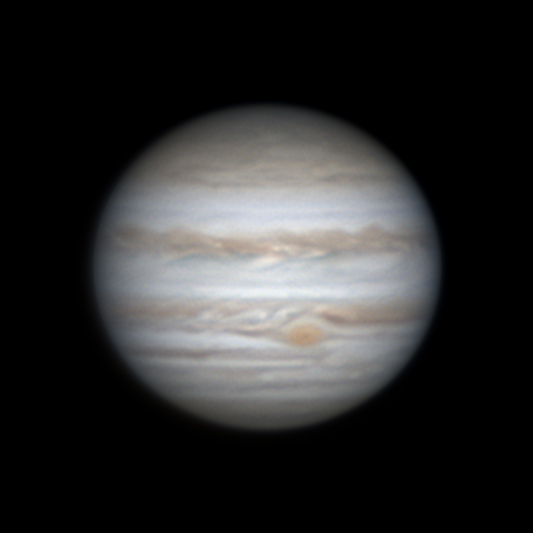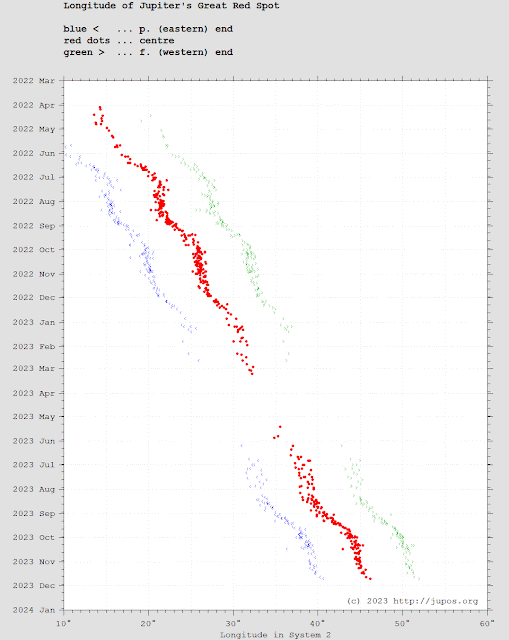Warning: boring details regarding planetary image processing ahead.
Planetary imaging is best done these days with a web cam capturing short video segments with as many frames as possible. software then combines the sharpest frames, discarding frames distorted by atmospheric turbulence. the "stacked" image is that further sharpened. too much sharpening produces unsightly artifacts enhancing noise inherent in the imaging process, rather than fine detail. too little sharpening leaves a blurry image. recently "AI" techniques have been used to sharpen images or "denoise" sharpened images. the results have been very impressive, but controversial.
Here's an image of jupiter with very conservative sharpening. the image is nice and smooth, but blurry:
 |
| Jupiter 12/16/2023 05:20 UTC |
next up is an image with aggressive sharpening applied. fine details are more evident, but there are clearly sharpening artifacts, sometimes referred to as "noise":
next a conventional "denoise" has been applied, removing the artifact, blurring the image slightly, but preserving some of the sharpening for a smoother sharpened image:
here's what topaz denoise AI did to the sharpened image:
the image is far more aesthetically pleasing than the others, both silky smooth and razor sharp. this is what has generated the controversy. there are 2 main objections:
-personally i think this is silly. hubble images of jupter are smooth and sharp at this scale, why not mine?
-now this is a problem. a number of advanced imagers have demonstrated AI processed images with structures that look real, but aren't actually there. pretty damning criticism, thus all imagers submitting images for scientific work are avoiding AI processing. i think you can make the case that the false AI structures are the result of pushing the AI processing too far, but now that the objection has been raised, AI processing is widely condemned in the planetary imaging circles.
Image Details:
i'm submitting images to ALPO so now include image detail in the frame for the submission.
cloudy nights thread on the topic--mostly civil, only one post was banned (but you can still see it's residue)






































